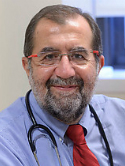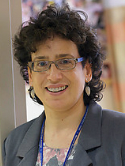Radiation-free, alternative-donor HCT for Fanconi anemia patients: Results from a prospective multi-institutional study Journal Article
| Authors: | Mehta, P. A.; Davies, S. M.; Leemhuis, T.; Myers, K.; Kernan, N. A.; Prockop, S. E.; Scaradavou, A.; O'Reilly, R. J.; Williams, D. A.; Lehmann, L.; Guinan, E.; Margolis, D.; Baker, K. S.; Lane, A.; Boulad, F. |
| Article Title: | Radiation-free, alternative-donor HCT for Fanconi anemia patients: Results from a prospective multi-institutional study |
| Abstract: | Fanconi anemia (FA) is an inherited bone marrow failure syndrome characterized by chromosomal fragility, progressive marrow failure, and cancer predisposition. Hematopoietic cell transplantation (HCT) is curative for FA-related marrow failure or leukemia, but both radiation exposure during transplant and graft-versus-host disease (GVHD) may increase risk of later malignancies of the head and neck and anogenital area. In this study, we tested a radiation-free conditioning regimen with a T-cell-depleted graft to eliminate radiation exposure and minimize early and late toxicities of transplant. Forty-five patients (median age, 8.2 years; range 4.3-44) with FA underwent HCT between June 2009 and May 2014. The preparative regimen included busulfan, cyclophosphamide, fludarabine, and rabbit anti-thymocyte globulin. Busulfan levels were monitored to avoid excess toxicity. All grafts were CD34-selected/T-cell-depleted using the CliniMacs CD34 columns (Miltenyi). Thirty-four patients (75.6%) with marrow failure and 11 (24.4%) with myelodysplastic syndrome underwent HCT using matched unrelated (n = 25, 55.5%), mismatched unrelated (n = 14, 31.1%), or mismatched related donors (n = 6, 13.4%). One year probabilities of overall and disease-free survival for the entire cohort, including patients with myeloid malignancy and those receiving mismatched related/haploidentical grafts, were 80% (+/- 6%) and 77.7% (+/- 6.2%), respectively (median follow-up 41 months). All young children (<10 years of age) undergoing HCT for marrow failure using low-dose busulfan-containing regimen survived. No patients developed acute grade 3-4 GVHD. Sequential reduction of busulfan dose was successfully achieved per study design. Our results show excellent outcomes in patients with FA undergoing alternative donor HCT without radiation exposure. The study is registered to www.clinicaltrials.gov as #NCT01082133. |
| Keywords: | busulfan; stem-cell transplantation; versus-host-disease; bone-marrow-transplantation; malignancies; secondary; conditioning regimen; antithymocyte globulin; aplastic-anemia; intravenous; cytoreductive regimen; low-dose busulfan |
| Journal Title: | Blood |
| Volume: | 129 |
| Issue: | 16 |
| ISSN: | 0006-4971 |
| Publisher: | American Society of Hematology |
| Date Published: | 2017-04-20 |
| Start Page: | 2308 |
| End Page: | 2315 |
| Language: | English |
| ACCESSION: | WOS:000399565300016 |
| DOI: | 10.1182/blood-2016-09-743112 |
| PROVIDER: | wos |
| PUBMED: | 28179273 |
| PMCID: | PMC5766838 |
| Notes: | Article -- Source: Wos |
Altmetric
Citation Impact
BMJ Impact Analytics
MSK Authors
-
 512
512Kernan -
 329
329Boulad -
 262
262Prockop -
 246
246Scaradavou -
 748
748O'Reilly
Related MSK Work



